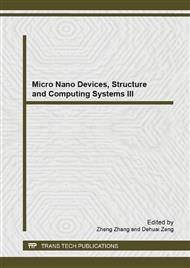p.7
p.12
p.17
p.21
p.27
p.32
p.36
p.42
p.47
Study of N-TiO2 Photocatalysts and their Catalytic Activities under Simulated Sunlight
Abstract:
N doped TiO2 was prepared by methods of sol-gel, precipitation, and temperature programmed nitridation (TPN) with NH3, respectively. The physical structure and chemical properties of the prepared N-TiO2 were characterized by DRS, XRD, XPS, and EPR spectra techniques. The result of XRD illustrated that all the samples were anatase, and no rutile or brookite phase. XPS and EPR indicated that N-TiO2 prepared by precipitate exist Ti3+ on the surface of TiO2. DRS pattern demonstrated N doping lead to the band gap narrow of all the samples, and the smallest band-gap energy of the samples prepared by precipitation was about 2.45eV. The photocatalytic activities were investigated by the photocatalytic degradation of methylene blue (MB) under simulated sunlight, and the highest activities reached to 75% during 120min.
Info:
Periodical:
Pages:
27-31
Citation:
Online since:
April 2014
Authors:
Keywords:
Price:
Сopyright:
© 2014 Trans Tech Publications Ltd. All Rights Reserved
Share:
Citation:


